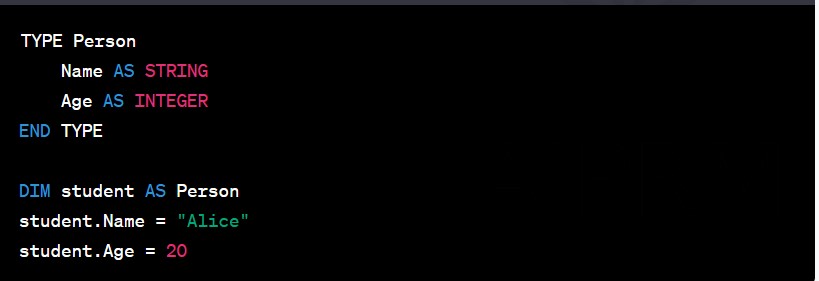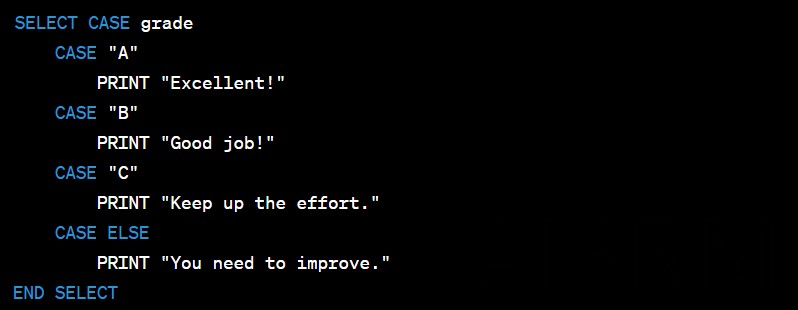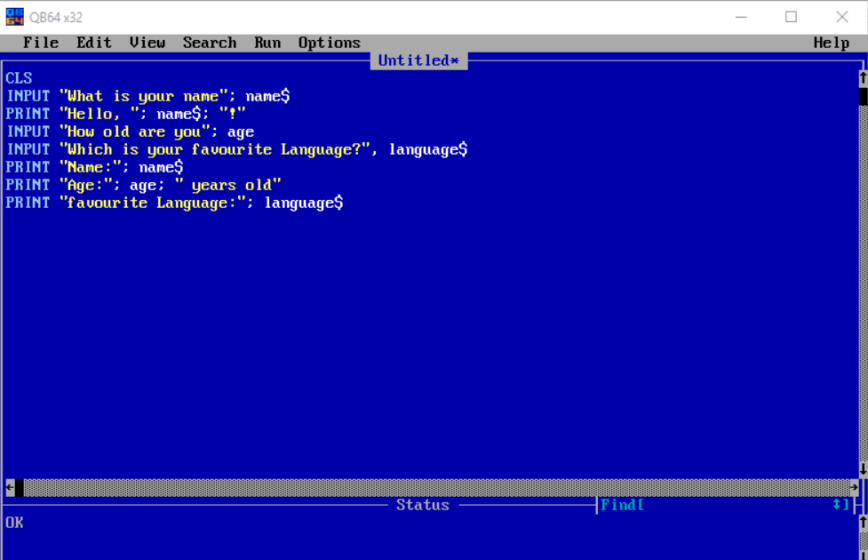QBASIC: An Introduction – Are you interested in learning a programming language that is beginner-friendly and offers a solid foundation for understanding computer programming concepts? Look no further than QBASIC! In this article, we’ll explore the ins and outs of QBASIC, its history, features, programming concepts, and more. By the end, you’ll have a good grasp of QBASIC and its potential for creating simple yet powerful programs. So, let’s dive in and discover the world of QBASIC!
Introduction to QBASIC
What is QBASIC?
QBASIC, short for Quick Beginners All-purpose Symbolic Instruction Code, is a high-level programming language developed by Microsoft in the early 1980s. It was designed to be user-friendly, making it an excellent choice for beginners who want to learn the fundamentals of programming.
Why is QBASIC popular?
QBASIC gained popularity due to its simplicity and ease of use. It provides a structured and intuitive approach to programming, allowing beginners to grasp essential programming concepts without feeling overwhelmed. Its straightforward syntax and built-in debugging tools make it an ideal choice for educational purposes and rapid prototyping.
History of QBASIC
Origins of QBASIC
QBASIC is an evolution of the earlier programming language, BASIC (Beginner’s All-purpose Symbolic Instruction Code). BASIC was developed in the 1960s to make programming more accessible to non-experts. QBASIC builds upon the foundations of BASIC, adding new features and enhancements.
Evolution and development
QBASIC was introduced in 1985 as part of MS-DOS (Microsoft Disk Operating System). Over the years, it went through various iterations and improvements, with QBASIC 1.1 being a widely used version. However, with the advent of more powerful languages and integrated development environments (IDEs), QBASIC gradually faded from the mainstream programming landscape.
Features and Benefits of QBASIC
Simplicity and ease of use
QBASIC’s simplicity is one of its most significant advantages. The language uses English-like keywords and straightforward syntax, making it easy to read and understand. Beginners can quickly grasp programming concepts without getting bogged down by complex syntax.
Versatility and flexibility
QBASIC supports both procedural and structured programming paradigms. It allows you to write modular code using functions and subroutines, making it easier to organize and reuse your code. Additionally, QBASIC provides built-in libraries for handling graphics, sound, and user input, enabling you to create interactive programs.
Quick prototyping and debugging
QBASIC’s integrated development environment (IDE) includes a line-by-line interpreter, allowing you to test and debug your code on the go. This feature is especially useful for beginners as it helps identify and fix errors quickly. QBASIC also supports stepping through the code and setting breakpoints to aid in the debugging process.
Compatibility and portability
QBASIC programs can run on various platforms, including older versions of MS-DOS, Windows, and even modern operating systems with suitable emulators. This compatibility ensures that programs written in QBASIC can be executed on different machines without significant modifications.
Getting Started with QBASIC
To start your QBASIC journey, you need to install the QBASIC environment. Here’s a step-by-step guide to help you get started:
- Step 1: Obtain the QBASIC software package. You can find it online by searching for QBASIC downloads or by acquiring a vintage copy of MS-DOS or Windows operating system that includes QBASIC.
- Step 2: Install QBASIC on your computer by following the installation instructions provided with the software package. Make sure to choose the appropriate version compatible with your operating system.
- Step 3: Once installed, launch the QBASIC IDE by double-clicking the QBASIC executable file. You will be greeted by a simple and user-friendly interface with a text editor and various menu options.
- Step 4: Start writing your first QBASIC program by entering your code in the text editor. QBASIC uses a line-numbered approach, where each line of code is preceded by a line number.
- Step 5: After writing your code, you can run it by pressing the F5 key or selecting the “Run” option from the menu. The QBASIC interpreter will execute your program line by line, displaying the output and any errors encountered.
- Step 6: As you gain more experience with QBASIC, you can explore its various features and experiment with different programming concepts. Take advantage of the extensive QBASIC documentation and online resources to deepen your understanding and enhance your skills.
By following these steps, you’ll be well on your way to becoming proficient in QBASIC programming and unleashing your creativity through code.
QBASIC Programming Concepts
To write effective QBASIC programs, it’s crucial to familiarize yourself with some essential programming concepts. Let’s explore a few key concepts you’ll encounter while using QBASIC:
Statements and syntax
QBASIC programs are composed of statements, which are instructions that tell the computer what to do. Each statement performs a specific action or operation. Statements in QBASIC are typically written on separate lines and end with a line-ending character.
The syntax of QBASIC is straightforward and uses keywords, variables, and symbols to form statements. It’s important to pay attention to proper syntax and indentation to ensure your code is correctly interpreted by the QBASIC interpreter.
Variables and data types
In QBASIC, variables are used to store and manipulate data. A variable is defined by a name and a data type, which determines the kind of data it can hold. QBASIC supports various data types, including numeric types (integer, single, double), string types, and user-defined types.
Understanding how to declare and assign values to variables is essential for working with data in QBASIC. Variables allow you to store input from the user, perform calculations, and store intermediate results.
Operators and expressions
QBASIC provides a range of operators that allow you to perform mathematical calculations, compare values, and combine expressions. Arithmetic operators such as addition (+), subtraction (-), multiplication (*), and division (/) enable you to perform basic mathematical operations. Logical operators like AND, OR, and NOT are used for Boolean operations.
Expressions in QBASIC are combinations of variables, constants, and operators that produce a value when evaluated. By using expressions, you can perform calculations and make decisions based on the result.
These programming concepts serve as the building blocks of QBASIC programs, enabling you to create functional and interactive applications.
Variables and Data Types in QBASIC
QBASIC provides several data types for storing and manipulating different kinds of information. Let’s explore some commonly used data types in QBASIC:
Numeric data types
QBASIC supports three main numeric data types:
- Integer (INT): Used to store whole numbers without decimal points. For example,
age = 25. - Single: Used to store single-precision floating-point numbers with decimal points. For example,
weight = 68.5. - Double: Used to store double-precision floating-point numbers with higher precision. For example,
pi = 3.14159.
Numeric data types allow you to perform mathematical calculations and store numerical data accurately.
String data type
The string data type is used to store sequences of characters, such as names, addresses, or sentences. String values in QBASIC are enclosed in double quotes ("). For example, name = "John".
You can manipulate strings by concatenating them using the ampersand (&) operator. For example, greeting = "Hello" & " " & name would result in the string "Hello John".
Arrays and user-defined types
QBASIC also supports arrays and user-defined types for more complex data structures.
Arrays allow you to store multiple values of the same data type under a single variable name. You can access individual elements of an array using their index. For example, scores(0) = 85 assigns the value 85 to the first element of the “scores” array.
User-defined types (also known as structures or records) allow you to create custom data types that can store multiple values of different data types. You define the structure using the TYPE keyword and then create variables based on that structure. For example:
 In this example, we define a
In this example, we define a Person structure with Name and Age fields. We then create a variable student of type Person and assign values to its fields.
Understanding variables and data types in QBASIC is crucial for effectively storing and manipulating data in your programs.
Control Flow Statements in QBASIC
Control flow statements allow you to control the flow of execution in your QBASIC programs. They determine which sections of code are executed based on specified conditions. Let’s explore some commonly used control flow statements in QBASIC:Conditional statements (IF-THEN, SELECT CASE)
TheIF-THEN statement allows you to execute a block of code if a condition is true. For example:
 In this example, if the variable
In this example, if the variable age is greater than or equal to 18, the message “You are an adult” is printed; otherwise, the message “You are a minor” is printed.
The SELECT CASE statement provides an alternative way to handle multiple conditions. It allows you to compare a variable against a set of values and execute the corresponding block of code. For example:
 In this example, if the variable
In this example, if the variable age is greater than or equal to 18, the message “You are an adult” is printed; otherwise, the message “You are a minor” is printed.
The SELECT CASE statement provides an alternative way to handle multiple conditions. It allows you to compare a variable against a set of values and execute the corresponding block of code. For example:
 In this case, the variable
In this case, the variable grade is compared against different values, and the appropriate message is printed based on the matched condition.
Looping statements (FOR-NEXT, DO-WHILE)
Looping statements in QBASIC allow you to repeat a block of code multiple times until a certain condition is met. TheFOR-NEXT loop is used when you know the number of iterations in advance. For example:
 This loop prints the values from 1 to 5 by incrementing the variable
This loop prints the values from 1 to 5 by incrementing the variable i in each iteration.
The DO-WHILE loop is used when you want to repeat a block of code as long as a specific condition remains true. For example:
 In this example, the loop continues printing the value of
In this example, the loop continues printing the value of counter as long as it is less than or equal to 10. The counter variable is incremented by 1 in each iteration.
Control flow statements provide you with the power to make decisions and repeat code execution based on specific conditions, allowing for dynamic and responsive programs.
Input and Output in QBASIC
QBASIC provides various ways to interact with the user through input and display information using output. Let’s explore some common techniques for input and output in QBASIC:Reading user input
To read input from the user, you can use theINPUT statement or the INPUT$ function in QBASIC. The INPUT statement allows you to prompt the user for input and store the entered value in a variable. For examplename$ variable, and a personalized greeting is printed.
The INPUT$ function is similar to the INPUT statement but allows you to retrieve a string of characters directly without displaying a prompt. For example:
password$ = INPUT$(“Enter your password: “)
In this case, the user is prompted to enter their password, and the entered value is stored in the password$ variable.
Displaying output
QBASIC provides thePRINT statement to display output to the screen. You can use it to print text, variables, and expressions. For example:
name$ = “John”
age = 25
PRINT “Name: ” + name$
PRINT “Age: ” + STR$(age)
In this code snippet, the PRINT statement is used to display the name and age of a person by concatenating strings and variables.
QBASIC also supports formatted output using the PRINT USING statement. It allows you to specify a format string to control the appearance of numeric values, dates, and other types of data. For example:
PI# = 3.14159
PRINT USING “##.##”; PI#
This code snippet prints the value of PI# with two decimal places.
By combining input and output techniques, you can create interactive programs that prompt the user for information, perform calculations, and provide meaningful output.
Conclusion
QBASIC is a powerful yet beginner-friendly programming language that offers simplicity, versatility, and a supportive learning environment. Its intuitive syntax, built-in debugging tools, and extensive documentation make it an excellent choice for beginners and educational purposes. In this article, we explored the basics of QBASIC, including its history, features, data types, control flow statements, and input/output techniques. By understanding these fundamental concepts, you can start your journey into the world of QBASIC programming and unleash your creativity through code. So, why wait? Get started with QBASIC today, and embark on an exciting programming adventure!FAQs (Frequently Asked Questions)
Q: Is QBASIC still relevant in today’s programming landscape? A: While QBASIC is not as widely used as it once was, it still holds value as a learning tool and for developing small-scale applications or games. Q: Can I create graphical applications using QBASIC? A: QBASIC supports simple graphics through its built-in libraries, allowing you to create basic graphical interfaces and games. Q: Is QBASIC suitable for professional software development? A: QBASIC is not commonly used for professional software development due to the availability of more powerful and modern programming languages and tools. Q: Are there online resources available to learn QBASIC? A: Yes, there are several online tutorials, documentation, and forums dedicated to QBASIC that can help you learn and explore the language further. Q: Can I use QBASIC on modern operating systems? A: QBASIC was primarily designed for MS-DOS and older Windows systems. However, with the use of emulators or virtual machines, you can run QBASIC on modern operating systems.com Domain Registration | Buy a .com Domain Name Today
Search The Domain Name You Want com Domain Registration – The internet has become an
-
Best Ransomware Detection Techniques
22 May 2023 -
What is Drupal used for?
22 May 2023 -
Is PrestaShop a CMS or Framework?
22 May 2023






